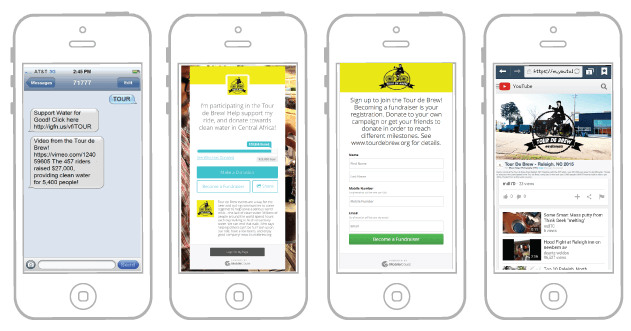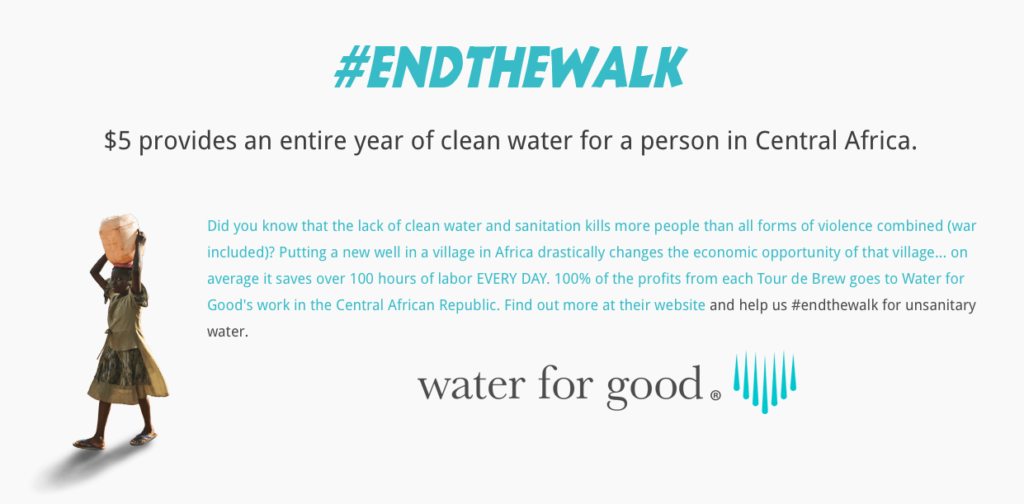May 11, 2022
Fundraising Event Ideas: 19 Tips and Expert Advice for Planning Your Next Event

Fundraising Event Ideas, Tips, and Tricks from the Experts
Preparing to plan a fundraising event for your organization? Fundraise like a pro without breaking a sweat with these preliminary steps and advice. Expert fundraising event planners and mobile fundraising software firms shared their top tips to make planning your organization’s next big fundraising event as smooth as possible.

“We asked almost 100 nonprofits what the average cost-per-dollar raised was for 8 different types of fundraising events. For smaller nonprofits, events that incur the fewest initial costs make them a good option for most nonprofits that want the most bang for their buck, and a-thon events (e.g. walk-a-thons) were a popular choice.”
– Janna Finch, Senior Market Research Associate of Software Advice, a company that provides research and reviews of fundraising software
Fundraising Event Ideas: What To Do First
1. Decide on your target audience. Once you’ve done that, the fundraising style(s), event type, theme, budget, and venue options will fall into place. Having a structured overview, which doesn’t have to be huge or complicated, will keep you on track throughout the planning process.
2. Set up a mobile fundraising platform to collect and track the goal you are trying to raise with your event. Mobile fundraising allows you to easily make adjustments at any time to event keywords used to donate, live event thermometers, and donation pages, which can be updated instantly from any desktop or mobile device.
3. Know your limitations. As you proceed through the planning of your fundraising event, be aware of what you will, and will not, realistically be able to do. Starting early gives you time to counterbalance shortcomings with creativity, do-it-yourself work, and budgeting so your supporters have the best experience at your event.
“Make sure your information technology infrastructure is up to the task of helping you plan, track, execute, report, and follow up on the event. Excel spreadsheets are generally not the best choice for =information management of a significant event. Any time you have more than one spreadsheet, the chances of error increase dramatically. Task-appropriate software allows you to access a comprehensive view of the entire process”
– Susan Ruderman, Ed.M. Fundraising Expert with 25+ years of experience in nonprofit management and VP at Veritas Information Services, a fundraising consulting firm
Budget: How to Pay For Your Fundraising Event
4. Sponsors are invaluable. Reach out to local and big businesses to see if they would like to sponsor part, or all, of your event. When you pitch to potential sponsors, underestimate your event turnout so they will be pleasantly surprised when your event delivers a higher attendance.
5. Create an estimated financial plan and expense budget. Estimate the funding you expect to receive from sponsorships and ticket sales, as well as how much money you believe your event will raise from each fundraising approach (text to donate keyword, ticket sales, live auction, etc.) Then make a comprehensive list of all expenses you foresee incurring so you can highlight items to which potential sponsors can contribute.
Partnering with brands and business sponsors saves your organization money and resources while providing them great exposure.
6. An impressive 81% of consumers switch to brands that support a good cause. Start soliciting “in-kind” donations from local businesses early on to allow time for approvals and contributions. Ask the event venue, local catering companies, restaurants or bakeries, and entertainers/artists to support your cause with the charitable donation of their time and services.
Remember to thank partners and sponsors in writing and display their information in printed and digital material before/during/after the event.
Getting People to Attend
7. Consider adding in peer-to-peer fundraising before your event. Set up a campaign and empower current supporters to become ambassadors for your organization. A ticket to the event could be an incentive to reach a minimum donation amount. Peer-to-peer fundraising allows individuals to set up custom donation pages that are easily shared with friends, family, colleagues, and social networks.
Each crowdfunding individual raises an average of $568 versus an average traditional one-time gift of $139.
8. Determine what will make people want to attend your event and support your cause. What will attract them? Is it an expert speaker, or a celebrity honoree? Also, incorporate a transformational activity during the event that educates supporters about your mission, helps them to connect to your cause, and clearly see the impact they can make through their generosity. By combining attraction and purpose you’ll be able to pull together a fun and memorable event to which your supporters will be happy to RSVP.
9. The early bird catches the worm. Offer incentives like discounted tickets or gift bags when people register early instead of waiting (and forgetting).
“As a fundraising coach, one of the biggest mistakes I see nonprofits make is waiting until the event to make money on the event. They hope and pray that ticket sales and auction bids will make the event successful.
I don’t like taking that much risk. It’s better to get sponsors to cover all the event costs *before *the event starts. An easy way to figure that out is to use a tool like the free www.GiftRangeCalculator.com. You can put in the entire cost of the event and see what levels of sponsorships to ask for. Or even better, put in what you hope the event will raise. Then get sponsorships in line with that.”
– Marc Pitman, author of Ask Without Fear, international fundraising coach and keynote speaker
Mobile and Social Are A Must

10. Create videos to post on YouTube, which can be shared by your supporters across their social network of friends, family, and colleagues. You don’t need a full Hollywood production crew, just a little creativity and a story to tell to make several good, low-budget, high-quality short videos to support your organization, promote your event, and thank donors. Many of today’s smartphones are capable of creating short videos that can have a huge impact.
Including links to videos in your mobile communication campaign is highly effective for donor engagement.
11. Host pre-events on Facebook, live YouTube streaming, Twitter chats, and Google Hangout. Invite people to engage virtually to get a preview of what’s to come at the main event, highlighting activities or having a Q&A with your key speakers. It generates anticipation. (Remember to link to your registration form on each platform and mention it several times to boost ticket sales)

12. Plan your Twitter and Instagram hashtags. Start using them before the event so followers and supporters become familiar with your event. It is a good idea to search Twitter first to make sure it is not already in use. Then encourage attendees to use the #hashtag or Tweet button by placing them on your site, donation form, event registration, and in digital event collateral.
13. Use mobile-friendly registration. The easiest way to scare people or give them a reason to not register is by using paper registration (aka old-school) or online forms that are not easily completed on a mobile device.
Who Is Going to Help?
14. Teamwork. No matter the size of your organization and the number of volunteers, always try to delegate responsibilities. Let people take control of the areas they most enjoy, and they will likely carry out their duties with great success.

15. Communicate and follow up. Check in early and often to make sure volunteers, staff and vendors are on track with their event duties. Upload mobile numbers or have the team sign up with a subscription keyword to receive mobile messaging that will allow you to quickly send updates before, during, and after the event.
“Reminders…there’s never enough reminders as you hear it all the time…I never put it on my calendar.”
– Adrienne Mazzone, President of TransMedia Group, an award-winning public relations, crisis management, and media training firm
Event Day: Pulling it Off
16. Practice, practice, practice. Have the master of ceremonies, host, and any key speakers run through their presentations the day or morning before the event. Test the technological equipment and make a test pledge to your live event thermometer to make sure it all works. The more prepared you are, the better.
17. Set expectations for attendees and deliver. Ensure that the audience has a GREAT (not just good) experience.
18. Pay attention to the crowd’s reaction. Talk to attendees to see if things are going well and get their feedback during the event. Capture the list of compliments received and suggested improvements for your next event.
Validate mobile numbers or use a subscription keyword to communicate with participants after the event. Customize a survey form to send in a text message to get feedback.
Plan B: What to Do When Things Go Wrong
19. Outline the event, step-by-step, in a 2-column list: what could go wrong in one column, and your contingency plan in the second. Be prepared for the unexpected before the event even starts. Maybe the sound system fails. Maybe your keynote presenter bails. How will cope and move on? Having and sharing a backup plan for major event components will eliminate stress the day of.
Memorable events don’t just happen. Whether you’re planning a walk-a-thon, awards dinner, or gala benefit, and whether you have two weeks or an entire year to plan it, your event’s fate is in the details and how you pay attention to them. Make your event an across-the-board success that no one will ever be able to forget.
Related



